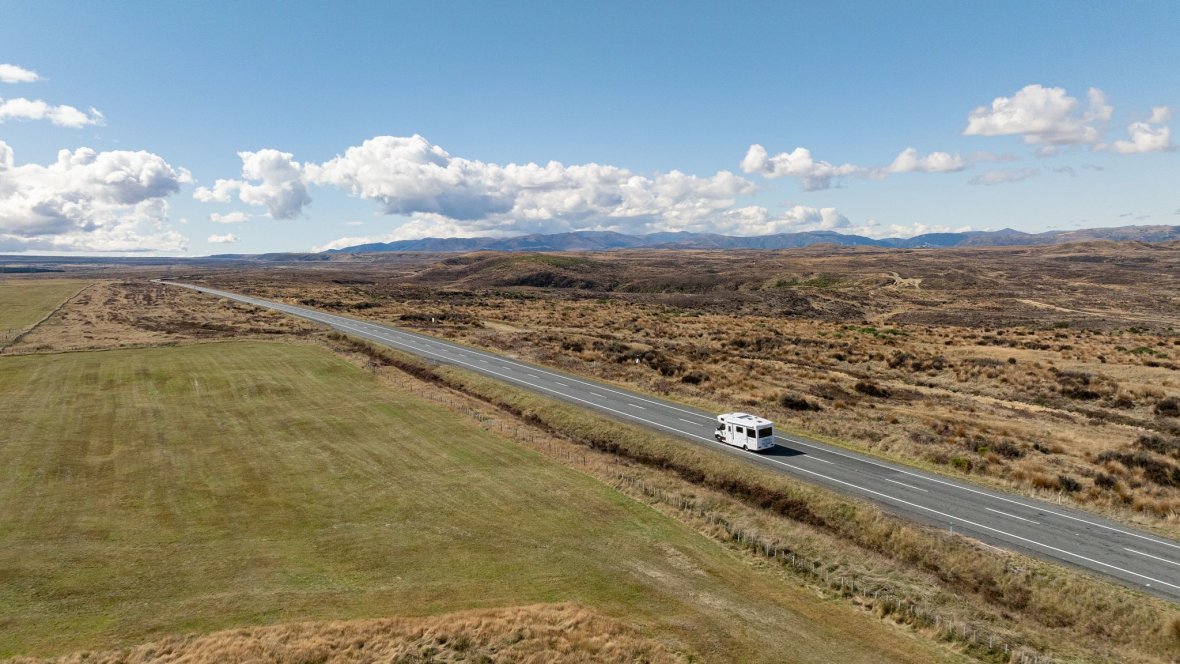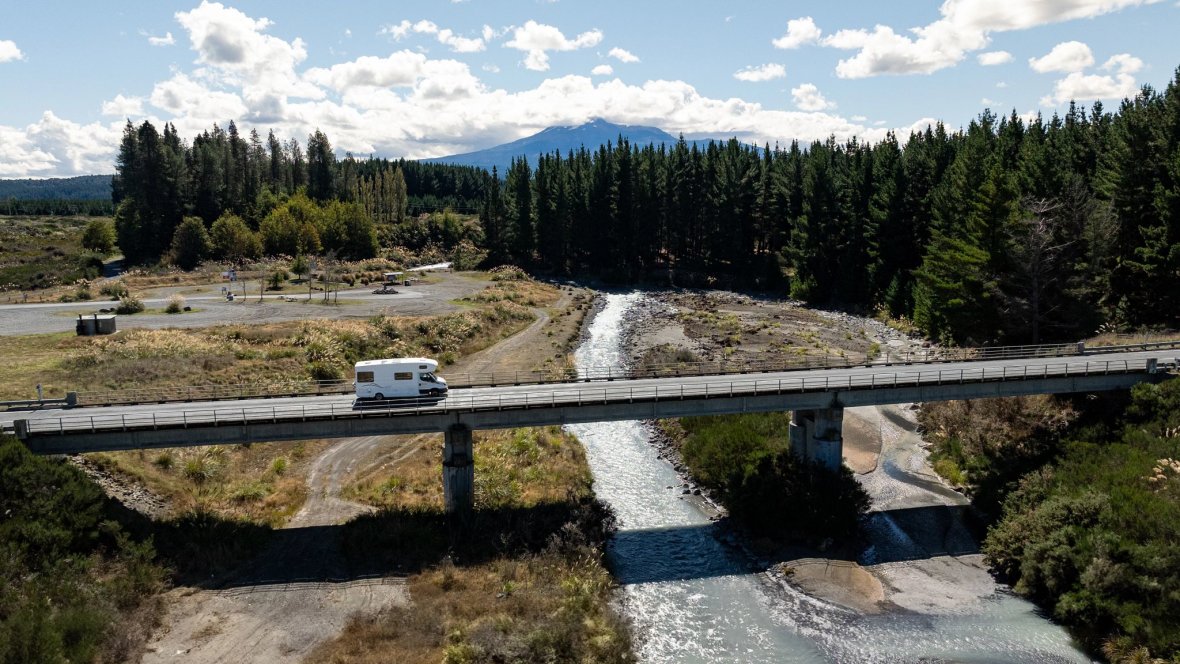


Join thousands of fellow campervan travellers
Sign up for our Britz newsletter to receive inspirational travel content and awesome deals, and we'll send you a copy of our Ultimate RV guide!
Thanks
Please confirm subscription in your email.
How long should I spend at Tongariro National Park?
Spending 2 to 3 days in the park allows time to complete the Tongariro Alpine Crossing, explore shorter walks like Taranaki Falls or Tawhai Falls, and take in the local visitor centres or scenic viewpoints. This also gives some flexibility for weather-dependent activities, as alpine conditions can shift rapidly.
If you’re only passing through, it’s still possible to enjoy a half-day or full-day visit. Shorter tracks like the Ridge Track (20 minutes return) or Silica Rapids Walk (2.5 hours return) start from Whakapapa Village and offer accessible options for those on tighter schedules.
How long does it take to hike Tongariro National Park?
The Tongariro Alpine Crossing is a 19.4 km one-way track that typically takes 6 to 8 hours to complete. Hiking in Tongariro includes steep climbs, exposed ridgelines, and descents through volcanic terrain. It's important to start early and be well-prepared with adequate clothing, food, and water.
Other hikes in the park vary in difficulty and duration:
-
Taranaki Falls Track – 2 hours loop, an easy and scenic option
-
Tama Lakes Track – 5 to 6 hours return from Whakapapa
-
Tongariro Northern Circuit – A 3 to 4-day loop that includes part of the Alpine Crossing, suitable for experienced hikers with hut bookings

How to get to Tongariro National Park
Tongariro National Park is centrally located between major North Island cities and is well-connected by road:
-
From Auckland – approx. 4.5 hours via SH1 south, then SH47
-
From Wellington – approx. 4 hours via SH1 north, then SH4 and SH47
-
From Taupō – approx. 1.5 hours via SH1 south and SH47
The closest service hub is National Park Village, which provides access to accommodation, shuttle services, gear rental, and fuel. This is also a useful base for campervan travellers preparing to hike the Alpine Crossing or explore the surrounding area.
Best time to visit Tongariro National Park
-
Summer (Dec–Mar): This is the most popular time to visit, offering stable weather, clear views, and longer daylight hours – ideal for hiking.
-
Autumn (Apr–May): Cooler temperatures and fewer crowds, with scenic colour changes in native foliage.
-
Winter (Jun–Sep): The mountains are snow-covered, attracting skiers and snowboarders to Whakapapa Ski Area. Hiking the Alpine Crossing requires alpine experience or a guide.
-
Spring (Oct–Nov): Transitional weather, with some snow still visible on the peaks and wildflowers beginning to bloom.
If you're attempting the Alpine Crossing, aim to start between 7am and 8am. This helps avoid the midday rush, provides time for breaks, and increases the chance of finishing before the weather changes.
Regardless of the season, always check the weather forecast and trail conditions before setting out. The Department of Conservation (DOC) and local shuttle operators provide regular updates.
Weather in Tongariro National Park
Weather in the park is highly variable and can change quickly – even within a single hour. Expect conditions to range from sunshine to rain, strong winds, or even snow in higher areas. In summer, daytime temperatures may reach the low 20s°C, while in winter they can fall well below freezing.
Pack layers, rain protection, and sunblock year-round. For those tackling longer or high-altitude hikes, thermal gear and a good windproof jacket are essential.

Best place to park your campervan at Tongariro National Park
For the Tongariro Alpine Crossing, the most convenient option is Ketetahi Car Park, located at the end of the trail. You can book a one-way shuttle that drops you at the start point (Mangatepōpō Car Park) in the morning, allowing you to hike back to your vehicle.
For overnight campervan parking, Cross X Roads offers a peaceful, non-powered site just 7 minutes from the Ketetahi trail end. It has basic amenities and a booking-friendly shuttle service to the start of the crossing.
Note: Overnight parking is not permitted at Mangatepōpō or Ketetahi trailheads.
Where to stay in Tongariro
Accommodation options around Tongariro National Park cater well to campervan travellers, with several holiday parks and freedom camping areas located near major trailheads.
If you're camping in Tongariro National Park, there are multiple DOC-managed campsites within the park boundary, most of which are suitable for self-contained vehicles. These include Mangahuia Campsite near Whakapapa Village and Whakapapa Holiday Park, both offering basic facilities such as toilets, water, and cooking shelters.
